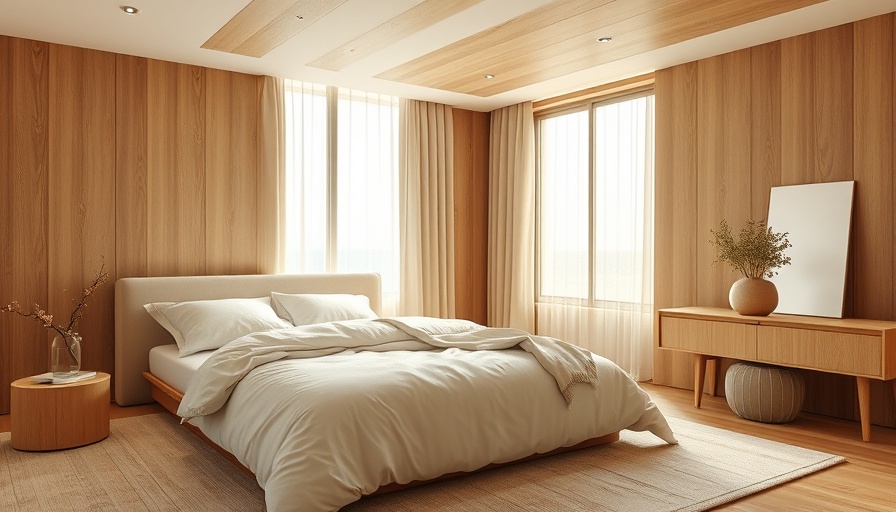
Creating a Coastal Sanctuary: Design Your Own Wellness Retreat
Imagine a space where the sound of crashing waves invites relaxation, where every element contributes to your well-being, and where you can retreat from daily stresses. Designing such a sanctuary, as illustrated in a recent project at Zuma Beach House, can transform not only a space but also your mood and health. Here’s how to create a guest room that doesn’t just serve a purpose but fosters a serene atmosphere reminiscent of a boutique hotel experience.
The Art of Minimalism: Keeping It Cozy Yet Functional
When space is limited, as it often is in coastal homes, simplicity becomes key. In the Zuma Beach House guest room, the design leans heavily on a Japandi aesthetic—merging Japanese minimalism with Scandinavian functionality. The clever decision to incorporate the IKEA PAX wardrobe, combined with custom walnut doors, solves the challenge of limited storage while enhancing aesthetic appeal. This semi-custom approach allows for a cozy environment without sacrificing comfort.
By opting for a desktop and workspace integrated into the design, guests can indulge in leisure while maintaining a touch of productivity. The focus here is to nod towards chic boutique hotels, which excel in maximizing small spaces without compromising on charm.
Embracing Nature: The Flow Between Indoor and Outdoor
Connecting indoor spaces with nature is essential in creating a wellness retreat. A sliding glass door leading to a private patio not only invites daylight but also encourages outdoor relaxation—be it sipping morning coffee or napping under warm sunshine.
Layering curtains can enhance this experience, offering versatility for privacy while maintaining the serenity of the room. The combination of light-blocking and sheer fabrics will create a tranquil ambiance and promote a sense of safety, allowing guests to unwind completely.
The Transformation of Space: Vaulted Ceilings and Statement Fixtures
Ceiling height is vital in a room’s atmosphere. The decision to vault the ceilings at Zuma Beach House was transformative. It allows airiness to envelop the space, elevating the guest experience from mundane to special. This strategic investment makes a compact room feel expansive, amplifying the soothing vibe.
The centerpiece, an oversized chandelier crafted from rattan, serves dual purposes—functionality and artistry. It not only provides light but also adds an organic touch, embodying the coastal vibes the house represents. The combination of thoughtfully chosen textures adds to the serene atmosphere.
Incorporating Wellness Features: Final Touches for Tranquility
The final aspect to consider in a wellness-focused room is the ambiance. Scents, textures, and serene colors can significantly impact well-being. Adding elements like essential oil diffusers or plants can purify the air and uplift the spirit. Soft color palettes help to calm the mind, while tactile fabrics invite guests to relax and indulge in comfort.
As you consider your own space, think about how each choice contributes to a peaceful environment. Whether it’s through the selection of decor or the layout of furniture, each element plays a crucial role in nurturing wellness.
Why a Wellness Retreat in Your Home is More Important Than You Think
As our lives become busier, having a personal retreat within our homes where we can decompress is invaluable. A well-designed guest room, like the one at Zuma Beach House, can encourage mindfulness and provide space for recharging away from the chaos of daily life.
By prioritizing wellness in your design choices, you create an inviting atmosphere that not only enhances your home but also promotes a healthier lifestyle for you and your guests. In an age where self-care is crucial, cultivating a serene environment is a decision worth making.
In the pursuit of the perfect guest room, remember that it’s about blending beauty with functionality—creating a haven for both you and your visitors. Consider how the little details can add up to a transformative experience, reminding us all of the power of thoughtful design.
 Add Row
Add Row  Add
Add 




Write A Comment